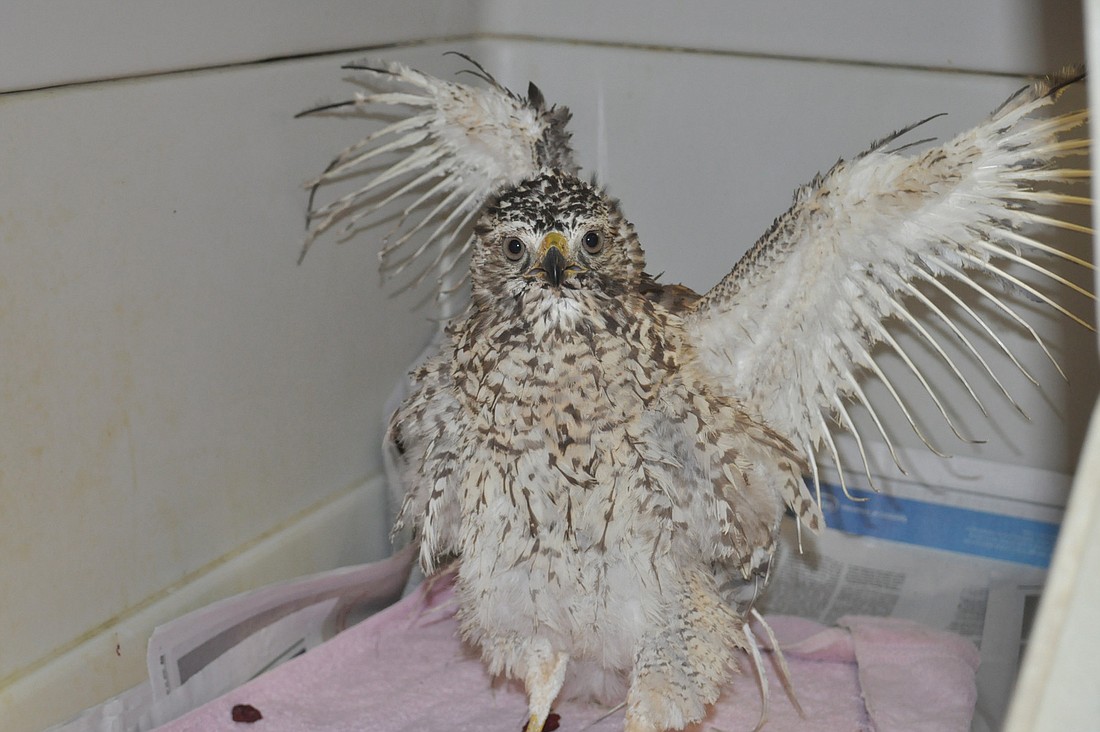- July 26, 2024
-
-
Loading

Loading

Behind the wooden fences and the echoing chirps that bounce through the parking lot between Save Our Seabirds and Mote Marine Aquarium are various species of birds. Some will be at the seabird facility for a few weeks, some months, and others will spend the rest of their lives there. All of them have a story.
A crested caracara was brought in about a month ago after a call from Arcadia. A woman was feeding the caracara and his mate for about four years. (SOS Executive Director Lee Fox warns against such behavior.) The two birds flew to a neighbor’s home and were later shot. Fox believes the female was killed, but her body hasn’t been found. As for the rescued male, the bones in one of his wings are fractured, but they have already set into place. He will recover, but he won’t be able to fly again and will likely become a permanent resident of SOS.
There are only about 400 crested caracaras in the state, Fox said.
Across the way from him is a red shouldered hawk that was found earlier this month at a waste site. His feathers were singed off, hindering his ability to fly. Fox researched and found a similar case in which the bird took about 10 months to heal. SOS typically only rehabilitates birds for up to six months, so Fox has requested to keep the burned bird longer than normal.
About 225 owls, vultures, parakeets, love birds and various other chirpers call the sanctuary their home. Some are kept outside in wooden abodes, while the injured are protected inside under close observation by the team and volunteers.
“The biggest things we need right now are cleaning supplies — laundry detergent, bleach, things like that — we go through our bleach every day,” Fox said. “Donations are always appreciated and help us keep doing what we’re doing.”
Fox stresses the importance of public awareness and the effect that humans have on nature.
She estimates 95% of the injuries the birds in the sanctuary suffer from are human-inflicted.
Although Save Our Seabirds is located just north of Mote Marine’s parking lot, it is often overlooked by patrons passing through, Fox said.
“One day I was downstairs, and as I was walking to the front entrance, three separate groups approached me and asked how to get to the dolphins and manatees,” Fox said. “I had to direct them to other areas, and only a couple asked about the seabirds.”
For more information on the organization or if an injured bird is found, call 388-3010.
IF YOU GO
What: Save Our Seabirds is a non-profit organization that rescues, rehabilitates and releases area seabirds. The 130,000-square-foot facility re-opened in November 2008 at the site of the former Pelican Man’s Bird Sanctuary. SOS is currently home to approximately 250 birds, which are made up of 30 native and exotic species.
When: The facility is open from 10 a.m. to 5 p.m. seven days a week.
Cost: There is no fee for admission, but donations are accepted ($5 for adults and $3 for children is suggested).
More info: The facility is always looking for volunteers who want to help in various departments, including the gift shop, hospital, doing rescue and landscape maintenance and more. Call 388-3010 or visit saveourseabirds.org.